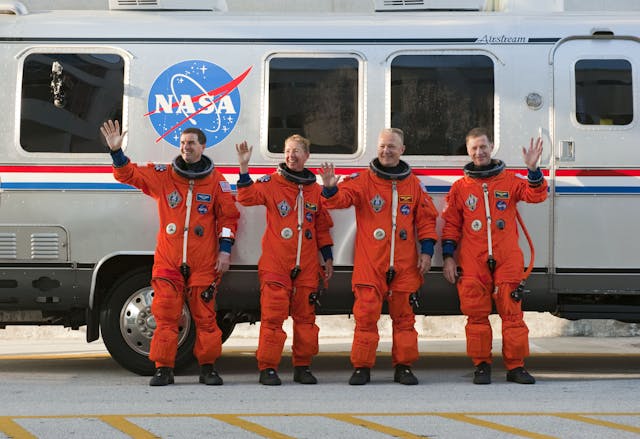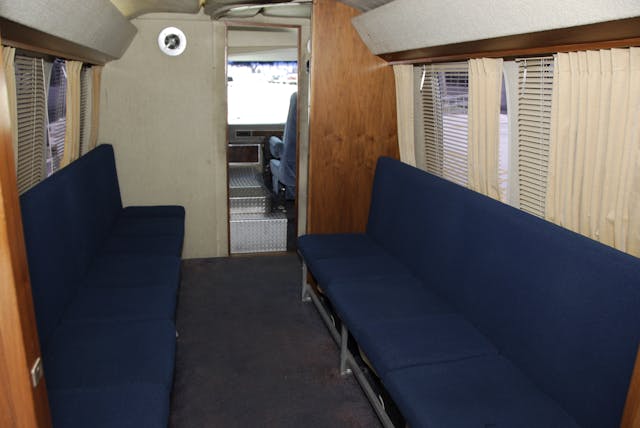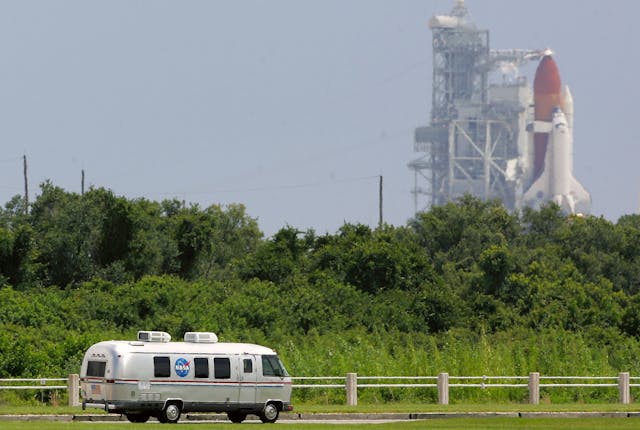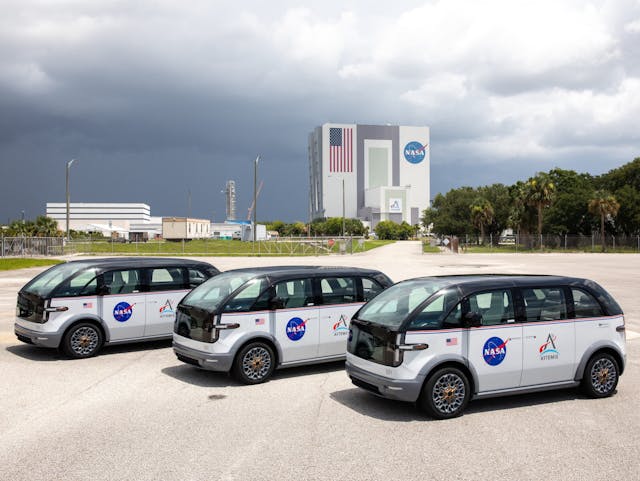Artemis moon astronauts are getting a new ride to the launch pad
After decades of using the silver Astrovan motorhome to carry space crews to the launching pad, NASA has upgraded the fleet to new vehicles from Canoo Technologies of Torrance, California.
Canoo delivered three “specially designed, fully electric, environmentally-friendly crew transportation vehicles to NASA’s Kennedy Space Center,” NASA said this week. “The zero-emission vehicles can carry four astronauts in their Orion crew survival system spacesuits, support personnel including a spacesuit technician, and provides room for specialized equipment for the drive to Launch Pad 39B ahead of Artemis missions to the Moon.”
Canoo, which cut a deal with Walmart last year to manufacture 4500 delivery vehicles, was awarded the contract in April 2022 to build the NASA vehicles. They are customized to accommodate NASA’s unique specifications for Artemis missions “while also paying homage to the legacy of the agency’s human spaceflight and space exploration efforts.”

Many aspects of the design, from the interior and exterior markings to the color of the vehicles to the wheel wells, were chosen by a creative team that included the Artemis launch director and representatives from NASA’s Astronaut Office based at Johnson Space Center in Houston. They provided insight from the conceptual phase throughout production.
“The collaboration between Canoo and our NASA representatives focused on the crews’ safety and comfort on the way to the pad ahead of their journey to the moon,” said Charlie Blackwell-Thompson, NASA’s Artemis launch director. “I have no doubt everyone who sees these new vehicles will feel the same sense of pride I have for this next endeavor of crewed Artemis missions.”

The Astrovan, which delivered multiple Shuttle crews on the nine-mile trip to the launch pad, has been retired to the Kennedy Space Center Visitor Complex’s Apollo/Saturn V Center. In 2011, a NASA press release talked about the Astrovan’s heritage:
“Historically, during launch operations at Kennedy for NASA’s Apollo and Space Shuttle Programs, the earlier Astrovans were the primary means of transporting crews from the astronauts’ crew quarters in the Neil A. Armstrong Operations and Checkout Building to the launch pad.”
Since 1984, “each Shuttle crew has traveled those nine miles, from their crew quarters to the launch pad, aboard the same vehicle. A modified Airstream motor home, the ‘Astrovan’ as it is called has only racked up about 26,500 miles in its 27 years of service. That’s because it was solely used to transport the astronauts on three occasions: to the launch pad for launch dress rehearsal, on launch day and after landing. ‘I always associate this vehicle with flying,’ says STS-135 Commander Chris Ferguson, ‘because you get in here for TCDT, which, of course, is the launch rehearsal, and then launch day.’

“According to [Astrovan driver Ronnie] King, the astronauts like the history-filled, if somewhat dated, vehicle just fine. ‘We were staged to get a new one,’ says the 13-year veteran driver. But, according to King, word came that the rookie astronauts wanted to keep the vehicle that was steeped in the tradition of the astronauts who traveled those nine miles to the pad before them.”
Eager to see how Canoo’s EV transports take the torch from the Astrovan, we’ll be watching in November 2024 when the Artemis 2 mission launches.

***
Check out the Hagerty Media homepage so you don’t miss a single story, or better yet, bookmark it. To get our best stories delivered right to your inbox, subscribe to our newsletters.



https://www.autoevolution.com/news/guy-buys-airstream-rv-at-auction-turns-out-to-be-nasa-s-space-shuttle-convoy-command-van-198498.html
Great design, NASA. That acre of glass should be great in the Florida sunshine. Then again, based on the success of the Artemis program, they may never get used. I believe that 2024 date has been pushed back, again, to 2025 or later, or never. Elon will be landing on Mars before that ill conceived (political pork) turd ever gets to the moon. Boeing can’t get the capsule close to right, they dump the multi-billion dollar rocket in the ocean after one use, and the priority was to reuse old shuttle engines to “save money”. Surprised that NASA didn’t spec more 70’s tech in the van powertrain, Nicd batteries, maybe?
These new vans might even be able to get to the launch pad and back without a recharge.
I chuckled about how proud they were over zero emissions when a rocket launch produces how much?
None unless. The rocket engine uses hydrogen and oxygen producing water as the byproduct .
Wow, they are getting in some boring transportation pod. Zero emissions? What a joke.
“Open the pod bay doors, HAL.”
If Canoo doesn’t make this a commercially available option, I presume someone will add some graphics to the family van just because they can.
Looks like the van from “Vegas Vacation”.
I must apologize… I’m elderly…but…. which end is the “front” and which end is the “rear?”
What’s the difference? If it runs out of juice or bursts into flames on the tarmac, it won’t matter if it’s coming or going…
Has the Marion Power Shovel booster transporter also been sent to the boneyard? Because I want to bid on that one, too. Shepard and Armstrong’s Airstream…man, that’s *camping.*